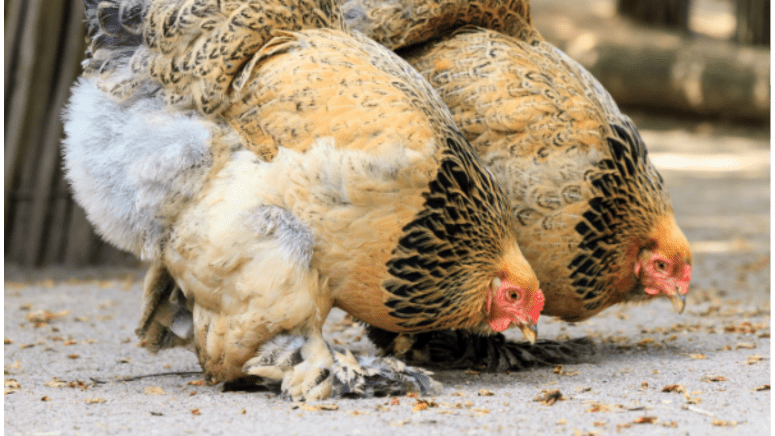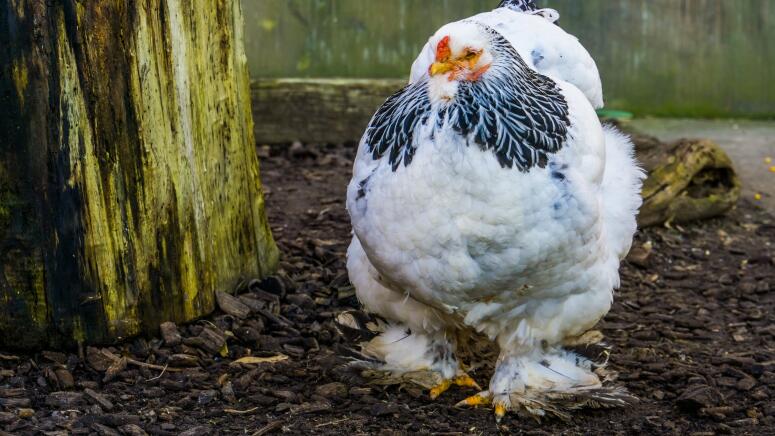Breed Profile: Brahma Chickens
Giant Brahma chickens have gained immense popularity among backyard chicken enthusiasts for their remarkable size, friendly demeanor, and the charming variety they bring to chicken coops across the world. It's easy to imagine why these stunning creatures are at the top of the pecking order.
In this blog post, we dive into the fascinating world of Giant Brahma chickens. We cover everything from their egg-laying habits, size, care requirements, and even explore the possibilities of owning these gentle giants in your backyard.
So, whether you're a seasoned chicken keeper or a beginner looking to add a unique breed to your flock, read on to discover all you need to know about the magnificent Giant Brahma chickens.

What Color Eggs Do Brahma Chickens Lay?
One of the first questions that often come to mind when considering Giant Brahma chickens is the color of their eggs. Brahma chickens are known to lay brown eggs. These eggs are typically medium to large in size, fitting their overall massive stature.
While the egg color may not be as varied as some other chicken breeds, Brahma eggs are prized for their taste and quality.
Do Brahma Chickens Lay Bigger Eggs?
In the world of chicken keeping, size does matter – especially when it comes to eggs. Brahma chickens are famous for their substantial eggs.
On average, Brahma hens lay large to extra-large eggs, making them a preferred choice for those who relish the prospect of farm-fresh, jumbo-sized eggs in their morning omelets.
Check out this fabulous egg size comparison chart from Backyard Chicken Coops:

What Are 3 Facts About Brahma Chickens?
- Historical Roots: Giant Brahma chickens have a rich history. They are believed to have originated in the United States during the mid-1800s. Initially called "Shanghai" chickens, they were bred from large fowl brought over from China. Over the years, they were further developed into the magnificent Brahmas we know today.
- Gentle Giants: Brahmas are renowned for their calm and docile temperament. They are incredibly friendly and gentle, making them a fantastic choice for families with children or those looking for sociable backyard chickens.
- Cold-Hardy: These chickens are well-suited for colder climates. With their fluffy feathering and stout build, Brahma chickens can endure chilly winters more comfortably than many other breeds.

How Big Are Brahma Chickens Compared to Normal Chickens?
Brahma chickens are often dubbed the "King of Chickens" for their colossal size. They tower above most other chicken breeds, with mature Brahma roosters reaching a weight of 12 to 18 pounds and hens averaging between 9 to 12 pounds.
In comparison, common backyard chicken breeds typically weigh between 5 to 7 pounds, showcasing the stark contrast in size.
Brahma Chicken Purpose
When it comes to poultry, Brahma chickens serve a dual purpose in the backyard. Originally bred for meat production, their large size made them a valuable resource for meat and their excellent meat quality still appeals to many poultry keepers today.
However, their calm disposition also makes them wonderful pets, and their egg-laying abilities are an additional bonus for those who want both eggs and meat from their chickens.

What to Feed Brahmas
To keep your Giant Brahma chickens healthy and thriving, it's crucial to provide them with a balanced diet. Their nutritional needs are similar to other chicken breeds, but due to their larger size, they may require slightly more food. Here are some key dietary considerations:
- High-Quality Poultry Feed: Start with a high-quality layer or broiler feed, depending on your Brahma's age and purpose (eggs or meat). Manna Pro's layer feeds offer complete, balanced diets for laying hens.
-
Supplement with Grains: Adding grains like corn, barley, or oats can provide extra energy, especially during colder months. Check out Manna Pro's supplements for poultry here.
Fresh Water: Ensure they have access to clean, fresh water at all times with a drinker for poultry.
Grit and Oyster Shells: Offer grit to help with digestion and oyster shells to provide calcium for strong eggshells (if you have laying hens). - Fruits and Vegetables: Treat your Brahmas with occasional fruits and vegetables for variety and added nutrients.
- Poultry Treats: Encourage natural foraging behaviors with poultry treats made with real insects, like Farmhouse Favorites Triple Bug Mix or Manna Pro Superworm Swarm.
Brahmas Care Tips
Brahma chickens are relatively low-maintenance, but they do require some special care due to their size and temperament:
- Spacious Coop: Ensure your chicken coop is spacious enough to accommodate their size. Brahmas appreciate room to move around comfortably.
- Cold Weather Precautions: Provide adequate insulation and heating in winter to keep them warm. Click here for tips on how to winterize your coop.
- Grooming: Regularly check and clean their leg feathers, as Brahmas are prone to muddying their feathers due to their size.
- Social Interaction: These chickens thrive on social interaction, so spend time with them to keep them happy and stress-free.
-
Regular Health Checks: Monitor their health and seek veterinary care if needed.
Brahma Chicken Size
As mentioned earlier, Brahma chickens are enormous compared to standard backyard chickens. Roosters can reach a height of 30 inches and hens around 26 inches. This substantial size is a testament to their heritage as one of the largest chicken breeds globally.

Brahma Chicks Care Tips
Raising Brahma chicks can be an enjoyable and rewarding experience. They are incredibly cute with their fluffy down and distinctively marked feathers. When caring for Brahma chicks, remember to:
- Provide a Brooder: Use a warm brooder with heat lamps to keep them cozy.
- Proper Nutrition: Feed them a starter feed specifically designed for chicks.
- Socialize: Handle and socialize with the chicks regularly to ensure they grow up to be friendly adults.
- Transition to Coop: Once they are old enough, gradually introduce them to the chicken coop with the adult Brahma chickens.
Conclusion
In summary, Giant Brahma chickens are a captivating addition to any backyard poultry flock. Their striking size, gentle nature, and impressive egg-laying capabilities make them a top choice for both experienced and novice chicken keepers.
Whether you're considering them for their eggs, meat, or simply as friendly companions, Brahma chickens offer a unique and rewarding experience in backyard chicken keeping.
By following the care tips outlined in this article, you'll be well-prepared to embark on a journey with these magnificent gentle giants, enriching your backyard and your life with their presence. So, go ahead, explore the world of Brahma chickens, and experience the joy they bring to your chicken coop.

Feature Products

